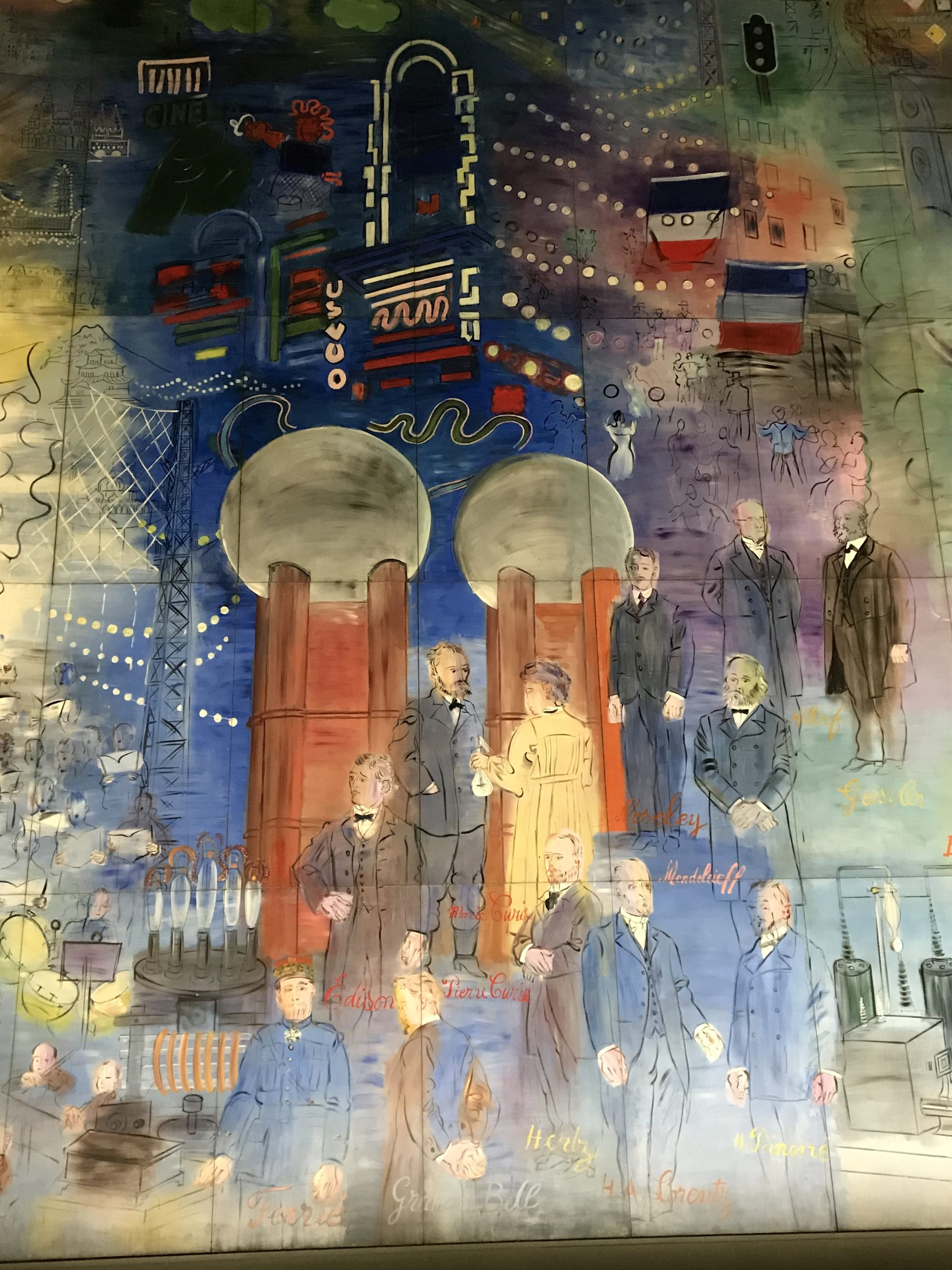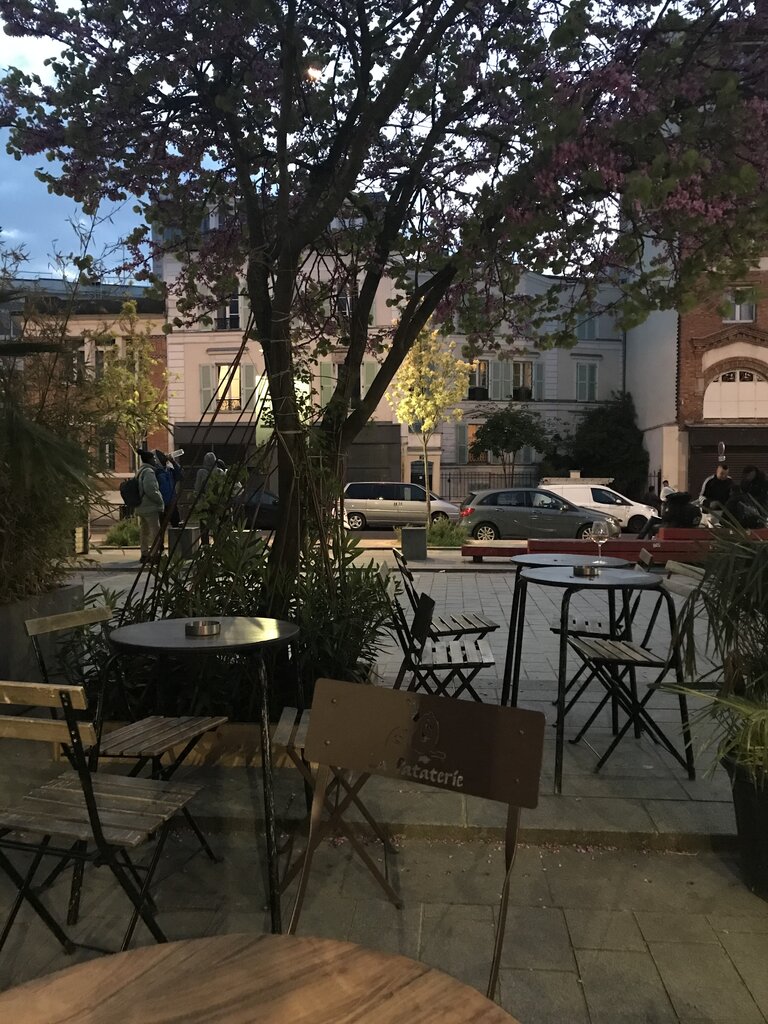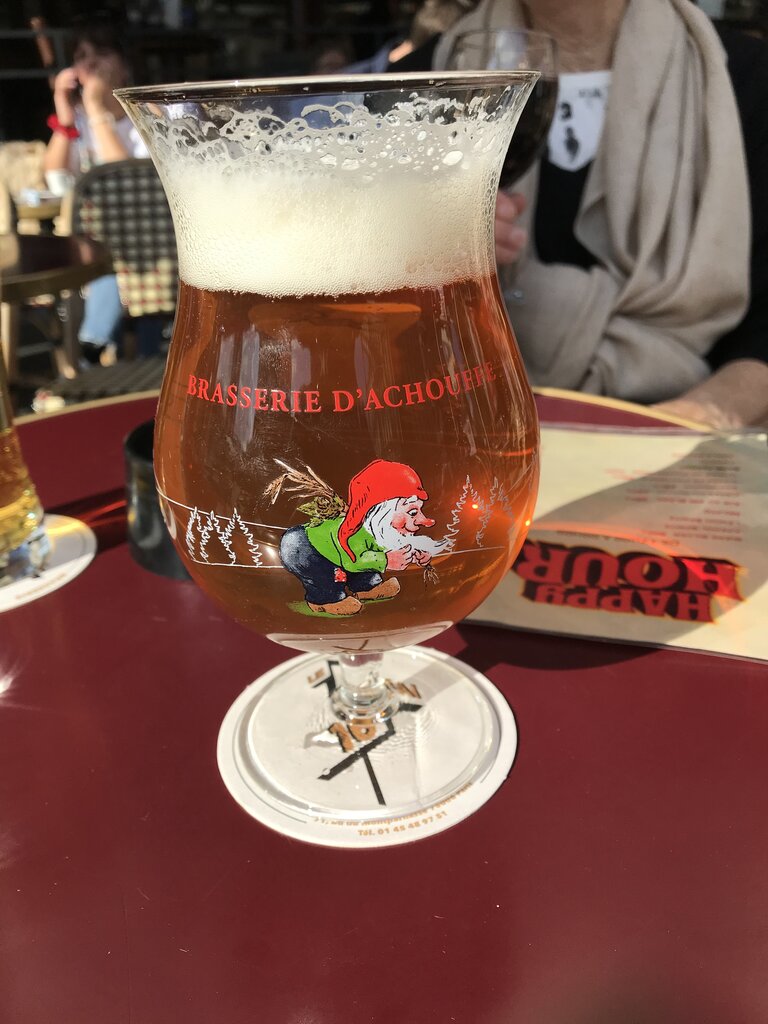
I could feel my heart beat a little faster as I stepped out of the hostel lobby and onto the lilac-filled esplanade. Kids were playing soccer while next door at the Corsican wine bar, the owner chatted with a couple of regulars. Up the street, the a shout of laughter broke through the hum of diners on sidewalk terraces. It was just before nine o’clock on this April evening in Paris’s 18th arrondisement, the air was mild, the sun had not yet set, and people were out.
A wave of happiness washed over me as I walked to the corner in search of dinner, a happiness I had rarely felt since the start of the pandemic two years before. You see, I love going out—to concerts, plays, museums, hotel bars, dive bars, taco trucks, movies, white-tablecloth restaurants, bookstores, beer gardens, comedy clubs, basketball games, picnics. By myself, for a tête-à-tête with my husband Ben or a close friend, as part of a big group, among strangers. I love all of it.
For me, the “third placeness” of going or being out is as important as the food, art, or music. In his classic work The Great Good Place, sociologist Ray Oldenburg uses the term third place as “a generic designation for a great variety of public places that host the regular, voluntary, informal, and happily anticipated gatherings of individuals beyond the realms of home and work” (Oldenburg 1999: 16). He goes on to show why third places are as important as the first two. Third places help us build community. They promote social cohesion and a sense of belonging. For Oldenburg, they offer opportunities for “the kind of association so essential to our freedom and contentment” (22). Their centrality to our individual and collective lives is a major theme in our May 2023 small-group tour Thinking Space, Drinking Space: Café Culture in Paris.
Oldenburg’s inclusion of the idea of happy anticipation, and the direct link he makes between being with people in third spaces and our own feelings of freedom and contentment, resonated deeply with me as I walked down the street. When in a third place, I tap into the current of energy that flows through the people present and is created by their being together in that place. I’m nourished and invigorated. I feel alive.
That feeling remained with me over the next few days on rue Pajol, my base while working in Paris. I was making the final preparations for a trip focused on literature and culture during and after World War I. I stay at the spacious, plant-filled Yves Robert HI hostel, which also houses a library, public garden, and community hall so is always a mix of local residents and travellers.
Most days start with a shot of espresso at Bob’s Bake Shop and a run through the Chapelle and Goutte d’Or (Golden Drop) neighbourhoods. (The latter is the setting of L’Assomoir, Zola’s masterpiece that we will read on the May 2023 trip.) My destination is Sacré-Coeur basilica at the top of the Montmartre butte. I do a few loops up and down the famous steps. At that hour the area is usually quiet, save a few scattered groups of tourists, some municipal workers, and pairs of runners. On the way back, the butcher shops, bakeries and tabacs open their steel shutters as the neighbourhood awakes for the day. I can’t resist stopping by a small open-plan North African pâtisserie, the name of which I can never remember because I always find it by its delicious smell.

of Festa è Basta
After the day’s work is done, I like to relax at Festa è Basta, a Corsican wine bar with a big terrace facing the esplanade of rue Pajol. Festa è Basta is right next to Bob’s, which has a steady stream of customers getting coffee and bagels on their way to the office, working on their laptops before lunch, or having brunch with friends on the weekends. It closes at 3, so in the evenings its own terrace is usually quiet. But during my most recent visit it was Ramadan, and Bob’s picnic tables came alive at sunset. Each evening groups of mostly young and middle-aged men, with a few families mixed in, would arrive bearing big aluminum pans of meat and rice and cartons of juice to break their fast. They came in a burst of energy, talking and laughing. After dinner the mood mellowed and they split into smaller groups to smoke and chat before they drifted away following a last flurry of sweeping and tablecloth shaking. Sitting on the terrace with a glass of niellucciu (Corsican sangiovese), occasionally making small talk with a couple of the fast-breakers nearest me, I felt that familiar thrill of being in a third place.

As the sun goes down over rue Pajol, the energy at Festa è Basta and the corner brasseries picks up, and it’s time to get some food. Sometimes I go a few hundred metres north to Nord Nord for their chicken skewers. The sidewalk terrace is invariably packed on clear evenings but on this visit I snagged a table in front of the tall open windows and soaked in the festive atmosphere. Sometimes I head south to Krishna Bhavan or one of the many other Indian and Sri Lankan restaurants on or around rue du Faubourg St-Denis. This street runs alongside the huge Gare du Nord (Northern Station) and is full of restaurants, grocers, betting bars, florists, Hindi DVD shops, and pretty much anything you can imagine. Once in a while I walk all the way down rue La Fayette to the Opéra and then on to the Seine, before turning back and making a last stop at the no-frills Au Rendez Vous des Belges for a glass of Chouffe, or at the hostel’s own bar, where there’s always a conversation to strike up with a fellow traveller.
With this sketch of a bit of Paris that has become, in some small way, part of my life, I’ve tried to capture the feelings of happy anticipation and contentment described by Oldenburg. In the second part of this post I’ll turn outward for a broader exploration of a third place that has become inseparable from the idea of France: the café. The café’s political, social, and cultural significance is the focus of our May 2023 trip on Paris café culture. In the next post (and IRL on our trip) we’ll head southwest from rue Pajol to Nouvelle-Athènes and Montparnasse. Along the way we’ll dive into history of some of the city’s most beloved cafés. See you there!
Sources: The Great Good Place by Ray Oldenburg. New York: Marlowe and Company, 1999


